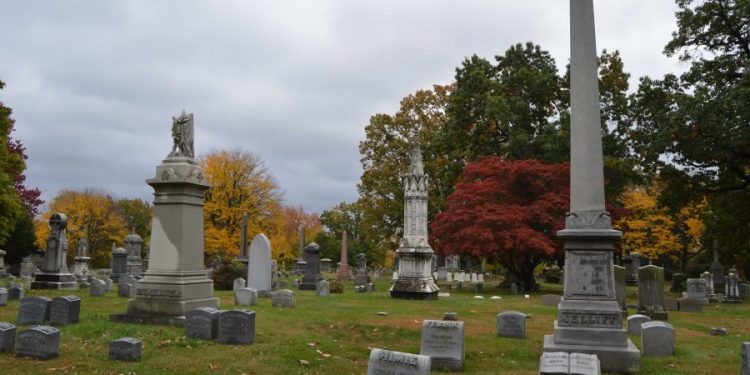By Michael Dobuski
In case the crafty decorations in the windows, sudden popularity of horror movies or actual date on the calendar were not clear enough indicators, it is almost Halloween. This means it is time for an extra spooky, Halloween edition of Fordham in the Bronx, made all the more scary by the fact that the places and events highlighted are completely true.
In the East River, northwest of Rikers Island, lies North Brother Island, a 13-acre plot of overgrowth and derelict hospital buildings. Claimed in 1614 and nicknamed “duo De Gesellen,” meaning the companions in Dutch, North and South Brother Island were largely ignored for about the next 250 years, mostly owing to the violent currents that surrounded them.
The smaller South Brother Island was a summer home for a time in the early twentieth century before burning down. It is now a wildlife sanctuary owned by the city. Years earlier, the Bronx neighborhood of Morrisania bought North Brother Island in 1874, where it was used by the Sisters of Charity as a tuberculosis hospital.
In 1885, the city of New York acquired the island and expanded the facility to focus on all infectious disease. In addition to tuberculosis, the hospital on North Brother Island treated diseases like scarlet fever, diphtheria and polio. Renwick Smallpox Hospital moved many of its patients to the island after the facility was completed.
By the turn of the century, overcrowding led to common medical instruments being in short supply and not being cleaned and sterilized properly. Fires on the island were especially common during outbreaks, due to the overabundance of patients necessitating the use of flammable cloth tents heated by wood-burning stoves. In the summer of 1904, a fire broke out on a passenger ship called the General Slocum. The captain managed to beach the vessel on North Brother Island. However, the propeller of the ship claimed the lives of most of the passengers. Only 321 survived. It is said that, as they lined the beach of North Brother Island with the recovered bodies, the death toll was over 1,000 people. It was the deadliest disaster in New York City’s history until the attacks on Sept. 11, 2001.
North Brother Island’s most famous resident was a woman named Mary Mallon, or, as she is more commonly known, Typhoid Mary. Mallon was a carrier of typhoid fever, which means that, while she exhibited no outward symptoms of the disease, she was still infected and contagious. She is known to have infected 47 people while working as a cook in Manhattan and Long Island, three of whom died from the disease.
She was arrested in 1907, and given the option by the Health Department of either having her gall bladder removed, or being quarantined on North Brother Island. Mallon believed adamantly that she was not infected with the disease, and chose to not have the risky operation. She lived alone, save for a dog, for three years in a bungalow away from the main hospital buildings. A legal battle in 1910 resulted in her release from the island, upon which she immediately took up another cooking job under a pseudonym, this time at Sloane Maternity Hospital. Twenty five more cases of typhoid at the hospital lifted the veil off her deception, and she was again exiled to North Brother Island in 1915 until her death in 1938.
In the 1950s, the island was turned into a rehabilitation clinic for recovering heroin addicts. The newly-admitted were given baths and searched for drugs before being placed in observation rooms. Here the patients went through withdrawal “cold turkey,” unless the symptoms were too severe, in which case they were weaned off the drug. The clinic was shut down in 1963 after a messy corruption scandal. The hospital was abandoned after that, and now, from April to October, the island serves as a bird sanctuary.
Across the Bronx in the Woodlawn neighborhood, there is the Woodlawn Cemetery. Over 400 acres of meticulously landscaped scenery make up one of the largest burial grounds in New York. Woodlawn is non-sectarian, and is said to be the final resting place of over 300,000 people. The cemetery opened in 1863, which was before the land was officially part of New York City.
The remains of many famous people, including Herman Melville, Duke Ellington, Elizabeth Cady Stanton and Fiorello LaGuardia are counted among those interred at Woodlawn. Over 1,300 mausoleums, some of which were designed by renowned architects such as Beatrix Farrand and Louis Comfort Tiffany, line the paths and a variety of memorials like the Anne Bliss Titanic Memorial are interspersed throughout the grounds.
In 2011, Woodlawn Cemetery was designated a National Historic Landmark by the National Parks Service. Plots of land start at $200 per square foot, but this steep price has not dissuaded many from erecting elaborate and ornate tombstones commemorating their deceased loved ones. One of the most impressive things about Woodlawn Cemetery, and indeed all cemeteries, is its surprising ability to mesh vastly disparate styles of architecture and design.
So if you ever find yourself at the end of the line on the 4 train, take a walk around Woodlawn. Its tranquility is a reprieve from the surrounding city, which of course was the point, and despite its inherit eeriness, really is quite peaceful. Oh, and have a Happy Halloween!





